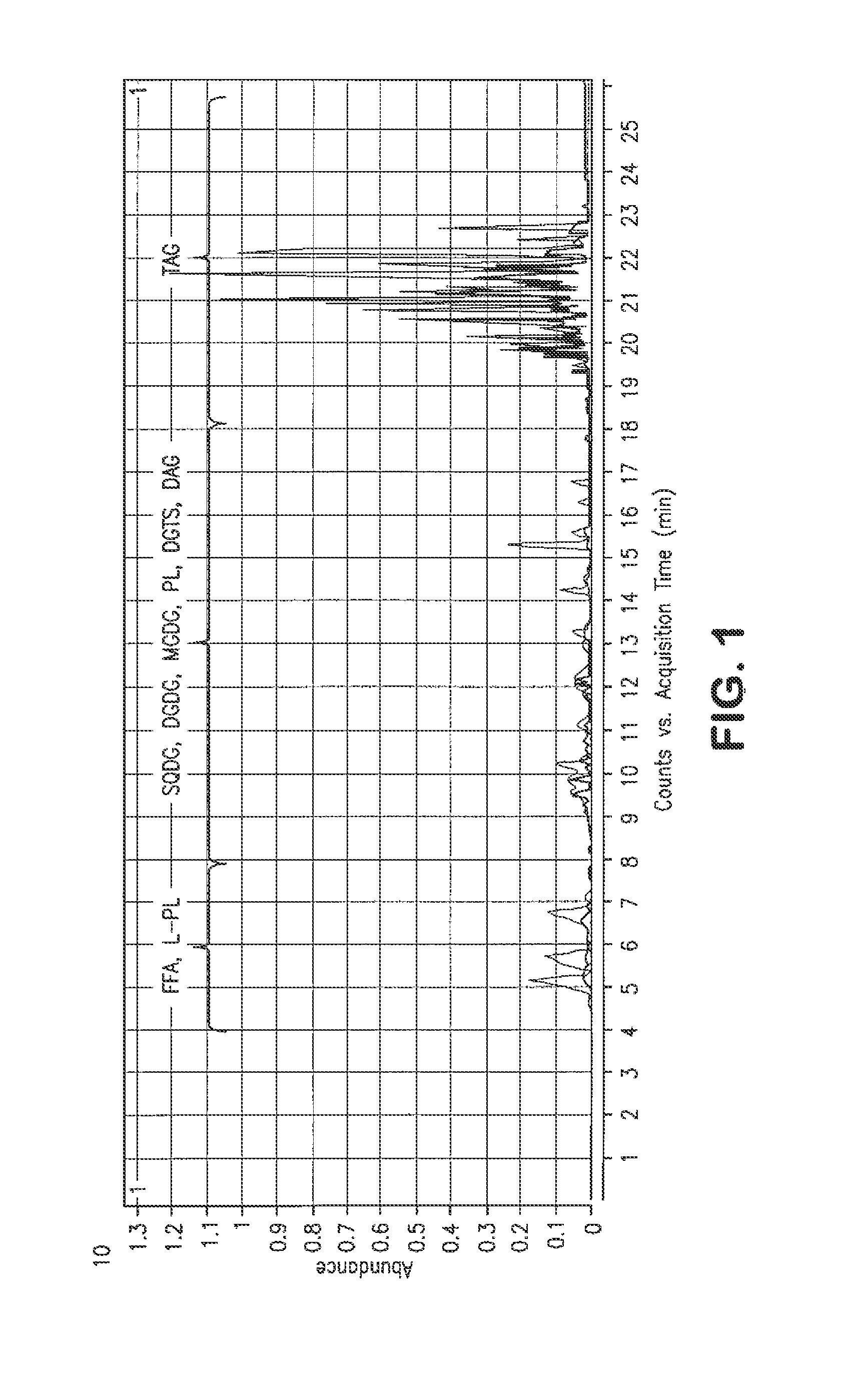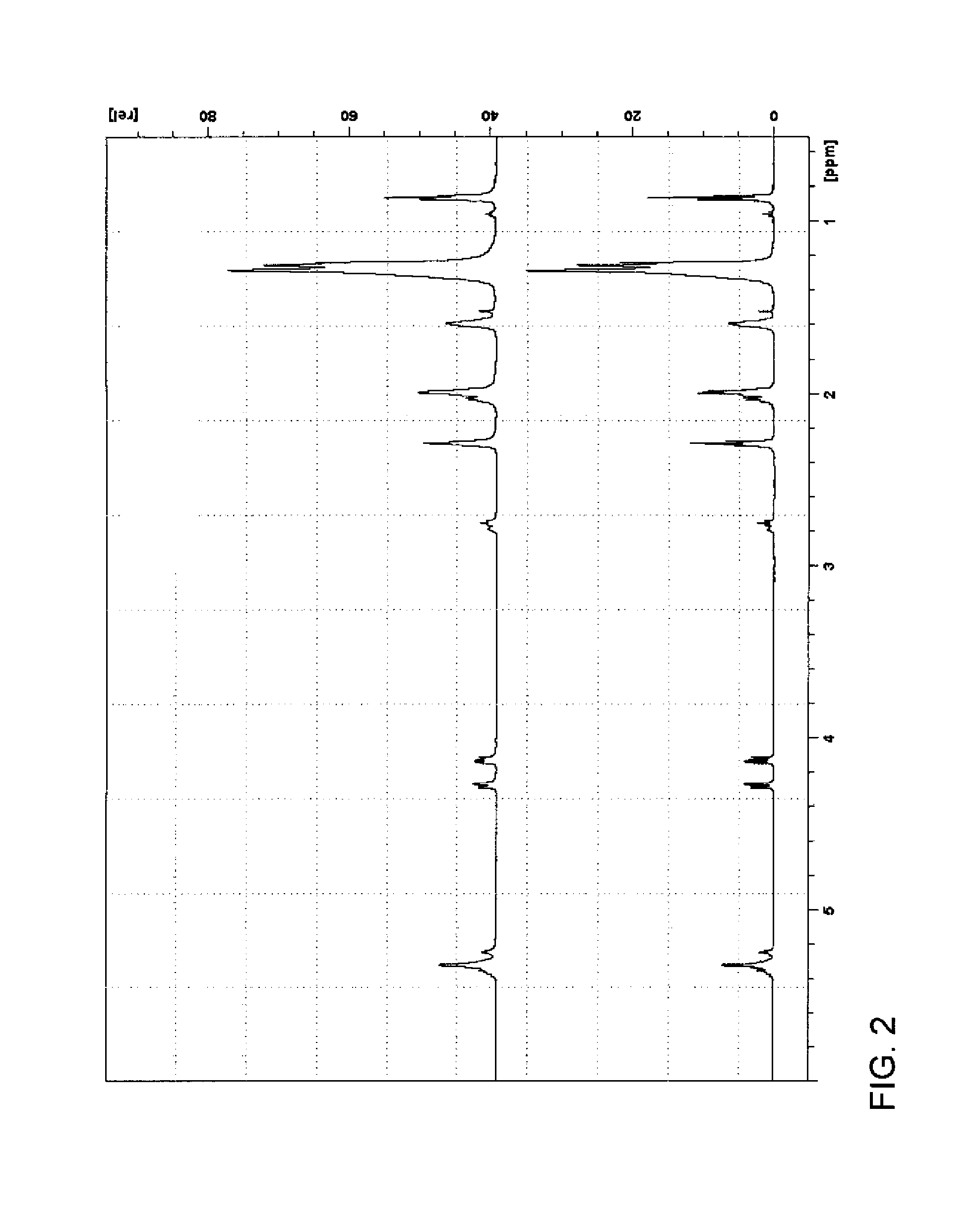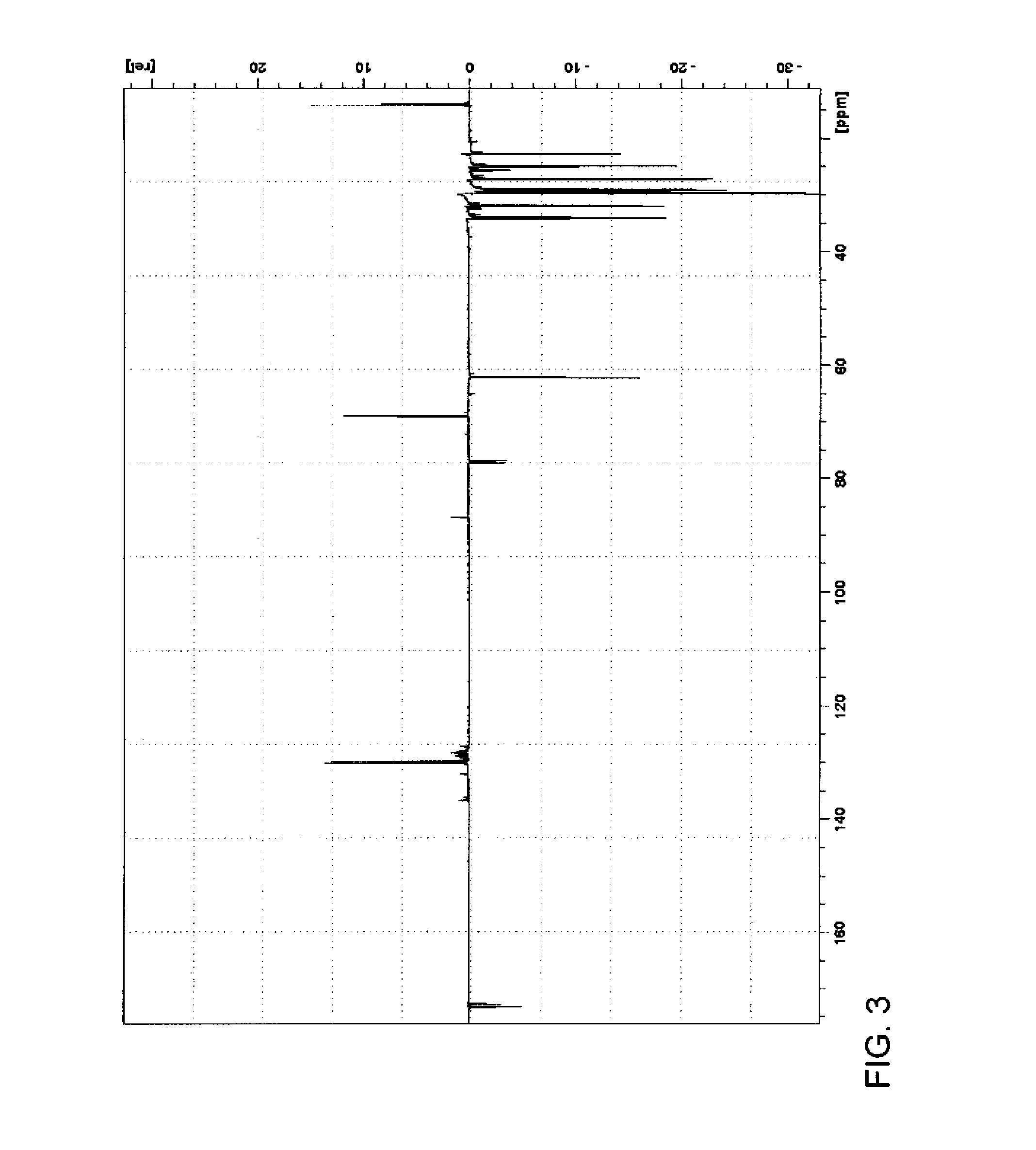Solvent extraction of products from algae
a technology of algae and solvents, applied in the field of solvent extraction of algae products, can solve the problems of many challenges in developing commercial scale production techniques, and achieve the effect of improving extraction
- Summary
- Abstract
- Description
- Claims
- Application Information
AI Technical Summary
Benefits of technology
Problems solved by technology
Method used
Image
Examples
example
Pressurized Hot Ethanol Extraction
[0064]To demonstrate the effectiveness of solvent extraction of algae products at elevated pressures, a laboratory scale extraction was performed using ethanol as a solvent. A proprietary strain of Cyclotella algae culture was harvested and then dewatered using a centrifuge. This resulted in an algae sample with a paste-like consistency. The sample included about 90% water and about 10% algae solids. The 90% water includes culture medium from the algae growth environment which contains dissolved salts. The algae sample was then mixed in a 5:3 by weight ratio with diatomaceous earth. This modified the consistency of the algae sample so that the sample could be readily scooped. A 66 ml zirconium cell was then loaded in the following manner. The bottom of the cell included a 10 μm frit. A 1.3 μm GF / B glass fiber filter was placed on top of the frit. A thin layer of diatomaceous earth was placed on top of the glass fiber filter. A 48 gram sample (30 gra...
example 2
Extraction Efficiency of Hot Ethanol
[0070]The effectiveness of extraction using hot ethanol was investigated in comparison with a conventional Bligh-Dyer style extraction procedure. Bligh-Dyer type extractions are recognized as a suitable method for extracting a high percentage of available lipids from an algae sample. The following example demonstrates that the use of hot ethanol provided comparable extraction capabilities for extraction of lipids from two different types of algae.
[0071]For extraction using hot ethanol, algae cells were lyophilized (or freeze-dried), lysed, and then heated in 95% ethanol for half an hour at 80° C., under sufficient pressure to prevent boiling of the ethanol. The lipids were then recovered by evaporating the ethanol. Similarly lyophilized and lysed cells were also subjected to a Bligh-Dyer extraction. For the Bligh-Dyer extraction, 0.8 volume parts of an aqueous sample of the lyophilized, lysed material was vigorously mixed with 3 parts of a 1:2 (v / ...
embodiment 1
[0087]A method for recovering products from algae, comprising: mixing an algae feed with particulate solids, the algae feed comprising from 0.1 wt % to about 30 wt % algae in water, the particulate solids having an average particle size between about 1 μm and about 200 μm, the weight of the particulate solids being at least about 10% of the weight of the algae feed; exposing the algae feed to a solvent under effective solvent extraction conditions, the effective solvent extraction conditions including a temperature of at least about 40° C. and a pressure of about 100 psig (0.7 MPag) to about 2500 psig (17.2 MPag), to form an extraction mixture comprising the solvent, the particulate solids, water, extracted products, and residual algae solids; and recovering at least a portion of the extracted products from the extraction mixture.
PUM
| Property | Measurement | Unit |
|---|---|---|
| particle size | aaaaa | aaaaa |
| particle size | aaaaa | aaaaa |
| pressure | aaaaa | aaaaa |
Abstract
Description
Claims
Application Information
 Login to view more
Login to view more - R&D Engineer
- R&D Manager
- IP Professional
- Industry Leading Data Capabilities
- Powerful AI technology
- Patent DNA Extraction
Browse by: Latest US Patents, China's latest patents, Technical Efficacy Thesaurus, Application Domain, Technology Topic.
© 2024 PatSnap. All rights reserved.Legal|Privacy policy|Modern Slavery Act Transparency Statement|Sitemap



